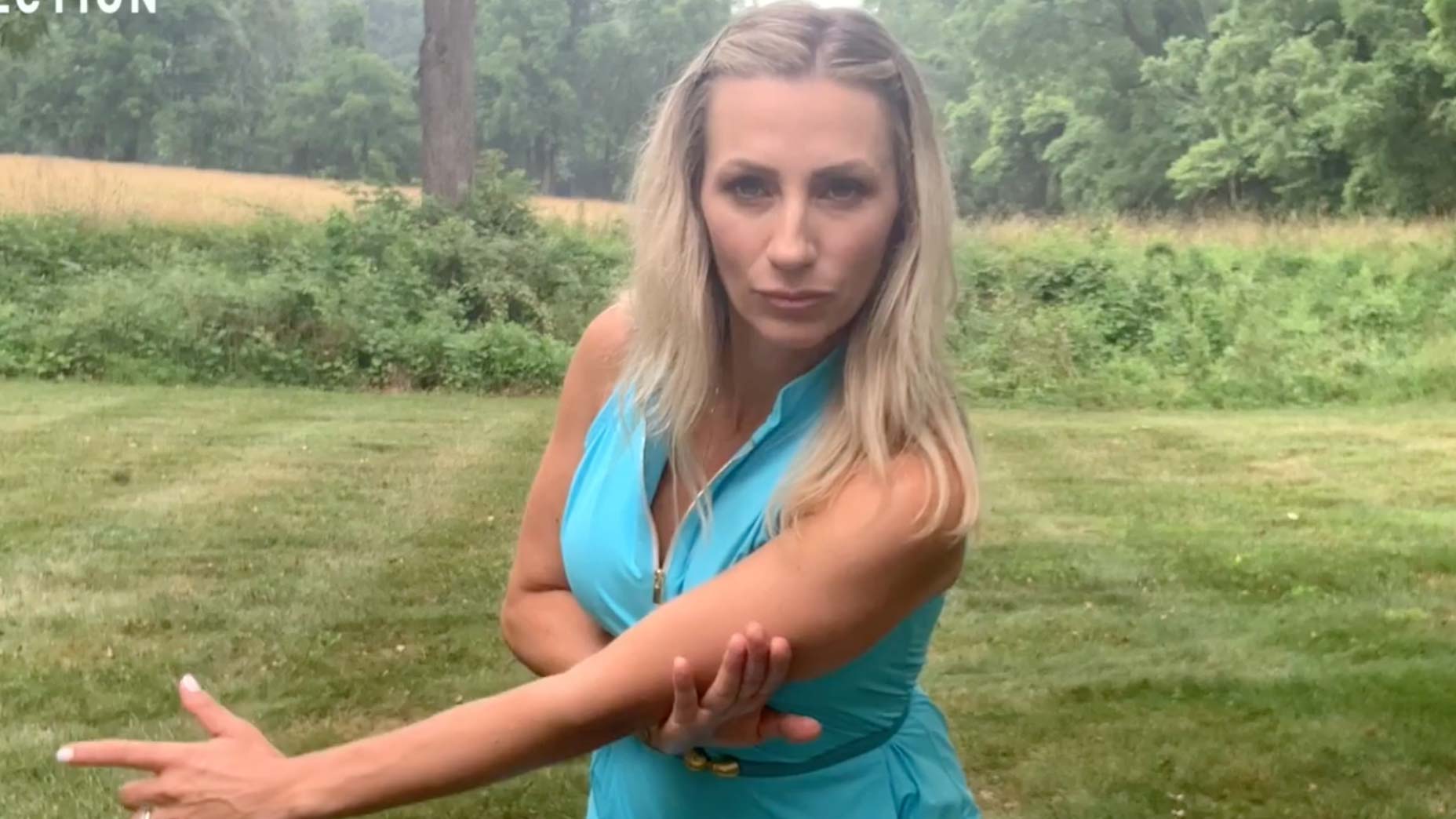Just because you can’t get to the course doesn’t mean your golf game has to suffer. There are a number of drills and exercises you can do to improve your game, all without ever leaving the house. In this edition of Home Practice, LPGA Top 50 Teacher Gia Bocra Liwski shows us three drills that you can work on in the comfort of your own home.
Arm practice
There are a number of ways to swing the club, but most good swings have a certain connectivity to them. To achieve this connectivity, it’s important to get everything in sync. To do this, Liwski has a drill that keeps the arms in sync with your body.
Stand in your golf posture and get into your address position without a club. Dangle your arms down and then take your trail arm, put it across your chest and tuck your hand underneath your target arm. Then rehearse your takeaway with the trail hand “pulling” your lead arm back.
Next, add a club to the mix and rehearse your takeaway with that same “pulling” swing thought triggering the beginning of your swing.
“I want to feel that arm really on my body,” Liwski says. “That’s again going to get everything moving in sequence. Once my arms hit my body, it’s going to rotate my torso and load my legs.”
Feet to ground
Power comes from a number of places in the swing, but your feet-to-the-ground connection is one of the most important. To work on getting the correct feel on this, take off your shoes so you can really get the feeling of your feet on the ground.
Get into your address posture and then curl your toes up away from the ground. If you have correct balance at address, you won’t have to shift your weight at all. You want the feeling of still being on the balls of your feet while your toes are raised.
Next get into that same posture and find the correct 50/50 balance. Then start rocking back and forth between one foot and the other, emulating the weight shift during your swing. Grab your driver and take a wide stance and continue this rocking motion, generating momentum as you sway. Continue building up momentum until you are making full swings with the driver.
“I want you to be able to feel the speed you’re able to create, the momentum you’re able to create by pushing off the ground” Liwski says. “Your ball speed will jump, you will hit the ball farther, but a lot of it is going to start with those great feet-to-ground connections.”
3 grip types
Any functional golf swing is going to begin with a proper grip. There are a few variations but all of them stem from the same basic principles. In this video, Liwski shows us three different grips for swinging the club.
Weak grip — to test the weak grip, grab the club with your lead hand, and with the trail hand, place it on top of the shaft, only putting pressure on the club, but not gripping it. Then make some swings. If the clubhead feels more stable and square at impact, a weak grip might be right for you.
Neutral grip — to test a neutral grip, do the same thing as above, but place your hand on the trailing side of the grip. Make some swings and again note how the clubface feels throughout the swing.
Strong grip — to test a strong grip, again do the same things as above, but put your hand more underneath the grip. This will help determine if a strong grip is right for you.
“Once you find your trail hand grip, your target hand grip needs to be on the club just as relaxed and just as good,” Liwski says.
